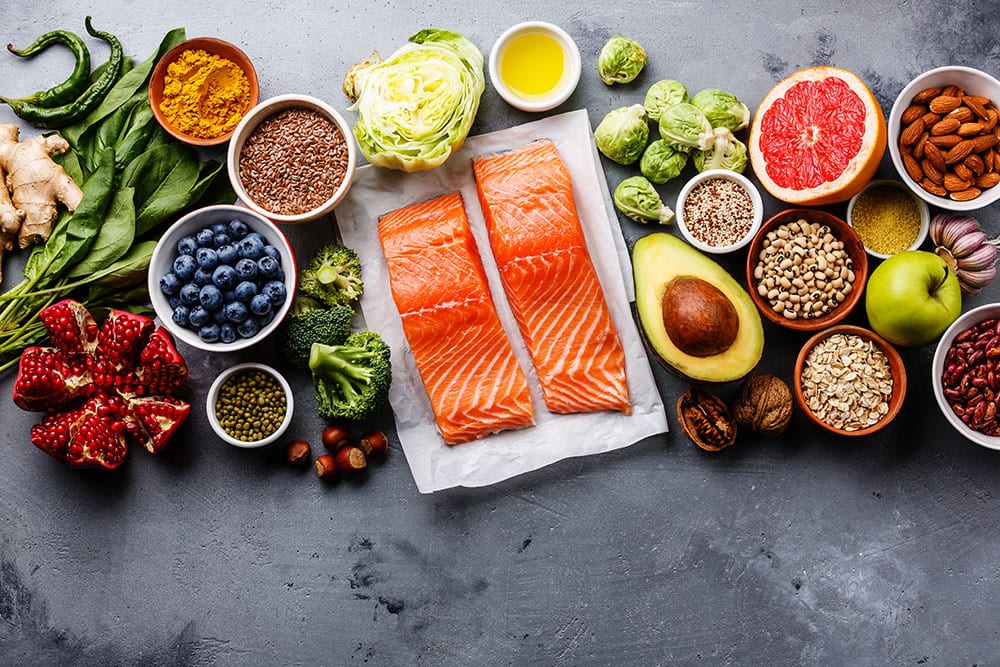Inflammation is a natural response to infection or injury. However, if it’s not dealt with properly, it can lead to chronic diseases such as arthritis, heart disease, and cancer. Inflammation is caused by an immune system response that releases chemicals called cytokines into your bloodstream. These cytokines cause your blood vessels to expand and become more permeable so that white blood cells can get into tissues where they’re needed most. The most common symptom of inflammation is swelling (edema). Several foods have been found particularly effective at fighting inflammation: broccoli, ginger root, papaya fruit and kale are all great choices!
Broccoli
Broccoli is a cruciferous vegetable, rich in vitamins C, K, and A. These nutrients are important for immune system health, bone health and eye health respectively.
Eat broccoli raw or cooked (it tastes great when roasted) or add it to soups and stir-fries!
Ginger
Ginger is a root that can be used in many different ways—it’s known for its spicy flavor and vibrant orange color. Ginger has been used for centuries to treat digestive problems, colds, and other ailments. Nowadays, it’s also known as one of the best natural remedies for inflammation because of its antioxidant properties.
The main active ingredient in ginger is gingerol, an antioxidant that helps reduce inflammation throughout the body by scavenging free radicals and blocking their ability to cause damage. If you’re looking to add some spice into your diet while reducing chronic pain or swelling from environmental stresses like pollution or sun exposure (or even arthritis), consider upping your intake of this flavorful superfood!
You can enjoy fresh ginger by grating it over soups or stews; adding shredded pieces directly into stir-fries; juicing it with other fruits like apples or grapefruit; simmering slices in hot water first thing in the morning before eating breakfast with honey added on top; cutting off thin slices from larger pieces when preparing them raw (they go great alongside roasted potatoes); or adding finely grated pieces directly onto salads instead of dressing as part of extra flavor punch (you’ll want about 1 tablespoon per serving). You’ll want about 2 tablespoons worth per serving when cooking with dried pieces since they aren’t quite as potent compared to fresh ones but still pack quite a fiery punch!
Papaya
Papaya is a great source of vitamin C and other antioxidants. It also has fiber, which can help reduce inflammation in the body. In addition, it can help protect against cancer by reducing your risk for colon, breast and lung cancers.
Papaya contains an enzyme called papain that helps you digest proteins better after eating meat or fish dishes. It’s been shown to aid digestion by breaking down proteins from foods such as chicken or beef into smaller pieces that are easier for your stomach to digest on its own (rather than having to rely on enzymes produced by other organs like your pancreas).
Kale
Kale
Kale is a member of the Brassica family, which also includes broccoli, cauliflower and cabbage. It’s rich in vitamins A, C and K; calcium; iron; fiber; and antioxidants—all of which help to reduce inflammation.
Avocado
Avocado is a superfood, but you already knew that. It’s loaded with healthy fats and antioxidants, which help reduce inflammation. That’s because avocados are also high in monounsaturated fats—the good kind of fat that reduces cholesterol levels and helps prevent heart disease.
If you’re concerned about your weight or cholesterol levels, then avocado toast might be the breakfast for you!
These 5 foods are amazing for fighting inflammation, and they’re useful in many different kinds of meals!
Broccoli is a great source of vitamin C, which helps to reduce the inflammatory response. Ginger has been shown to have anti-inflammatory properties, as do papaya and kale. Avocado contains monounsaturated fats that have been linked to reduced inflammation and improved heart health.
Conclusion
We hope that you’ve found this list of superfoods helpful and given you some new ideas for how to incorporate more vegetables into your diet. We know that it can be tough to get enough fruits and vegetables, especially when they come in forms like juices or powders instead of whole foods. But don’t worry! There are plenty of ways to work these foods into your routine without sacrificing taste or texture. You might just have to try a few different recipes before finding one that works best for your family’s preferences.



